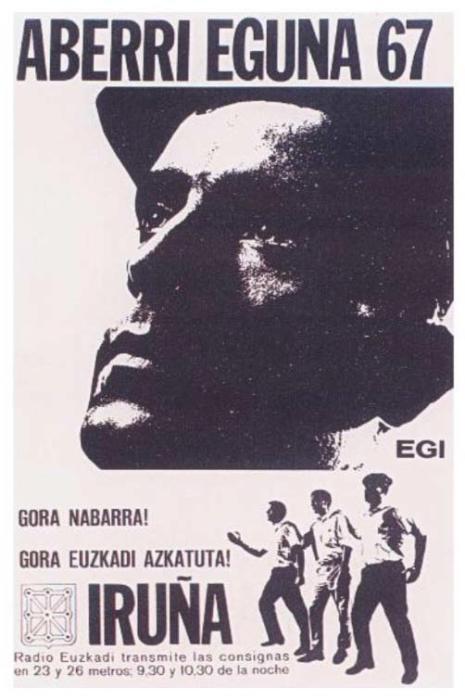Contenidos
Aberri eguna iruña
aberri eguna iruñea 2 2019-4-21
The first Aberri Eguna in 1932, gathered 60,000 people and was convened in Bilbao by the Basque Nationalist Party on March 27, 1932, Easter Sunday, and consisted of a demonstration that starting from the Plaza del Sagrado Corazón, ended at the birthplace of Sabino Arana, Sabin Etxea, rehabilitated in 1931 as the headquarters of the PNV in Bibao, where Luis Arana unveiled a plaque commemorating the event.[3] The first Aberri Eguna was held in Bilbao on March 27, 1932, Resurrection Sunday.
At the end of the dictatorship and during the Transition it was adopted by all Basque nationalist parties and by the non-nationalist left-wing parties as a holiday of the Basque homeland, or national day of the Basque Country, so in 1975, in Guernica, the joint convocation was attended by international personalities, being some of these also arrested by the police.
In 1978 there was a historic joint call for an autonomy statute for the Basque Country. After the first joint calls, as the political atmosphere in the Basque Country became more and more tense, they broke down. The PSE-PSOE stopped celebrating the Aberri Eguna after the 1979 edition, although it ephemerally recovered the celebration when it merged with Euskadiko Ezkerra in 1993.
independentziaren eguna 2013-08-15 orreaga nabarraren
Three decades after the military uprising there was already a fairly strong opposition to Franco’s regime and this made it possible for the most active clandestine organizations to make a united call for the Aberri Eguna of 1967. The Navarrese right wing and its media continued to maintain a belligerent attitude against Basque nationalism, while the physical repression was carried out by the Armed Police and the Civil Guard.
On the day of the Aberri Eguna, Juan Mari Feliu had to go up to the roofs of the Plaza del Castillo and take photographs of the rally called there. The rolls of film were then taken clandestinely to Ipar Euskal Herria.
burrunba elektrotxaranga (iruña, aberri eguna 2016)
At 12.30 a.m. a live broadcast began over the public address system, which could also be followed on the Internet, in which the songs ‘Txoria txori’, ‘Gernikako Arbola’ and ‘Ikusi mendizaleak’ were played, so that those attending the different mobilizations could sing them at the same time. Meanwhile, an artist has elaborated on a canvas a graffiti with the word ‘Independentzia’.
«From now on, Euskal Herria needs us to make country to promote convergence, to compact a community that is the basis for future political projects.» «To make country always on the basis of democratic debate, with dynamics of confrontation when necessary and dynamics of collaboration whenever possible; in that way we will achieve that the citizenship, the social agents and the institutions simultaneously make their efforts in the same direction and sense», they have remarked.
larrain dantza donostia 2020-2-16
Although the official celebration took place on March 26th, many people from all over the Basque Country began to arrive from the previous days. Large concentrations were expected, so prior measures were taken by the governmental authority. Around 1,700 agents were deployed, including the Civil Guard and secret police, who were ordered to control road access and close the city as far as possible.
At 12:00 on Sunday 26th, the Plaza del Castillo began to fill with people on the occasion of the Aberri Eguna celebration, and the police concentrated around it to control those attending the celebration. By 12:30 there were already between 20,000 and 25,000 people gathered, and several groups of young people began to sing patriotic songs to which neighbors joined in from their balconies.

